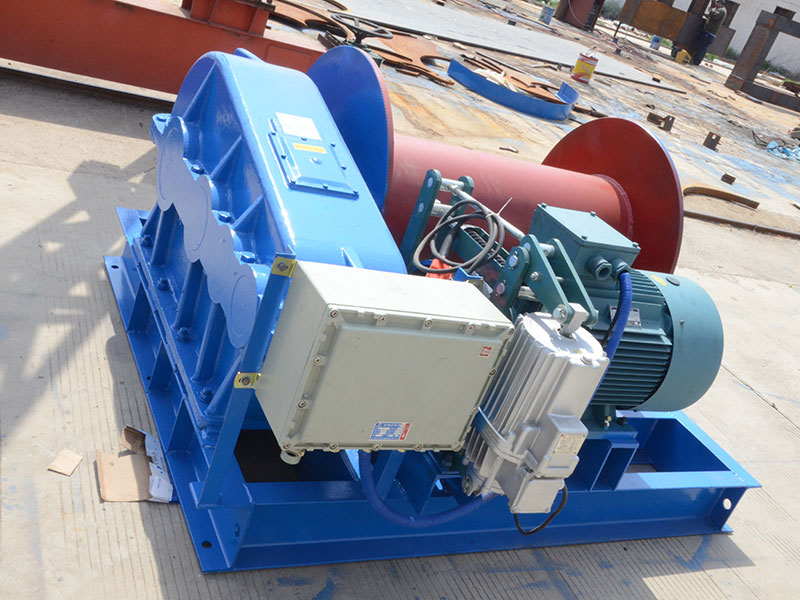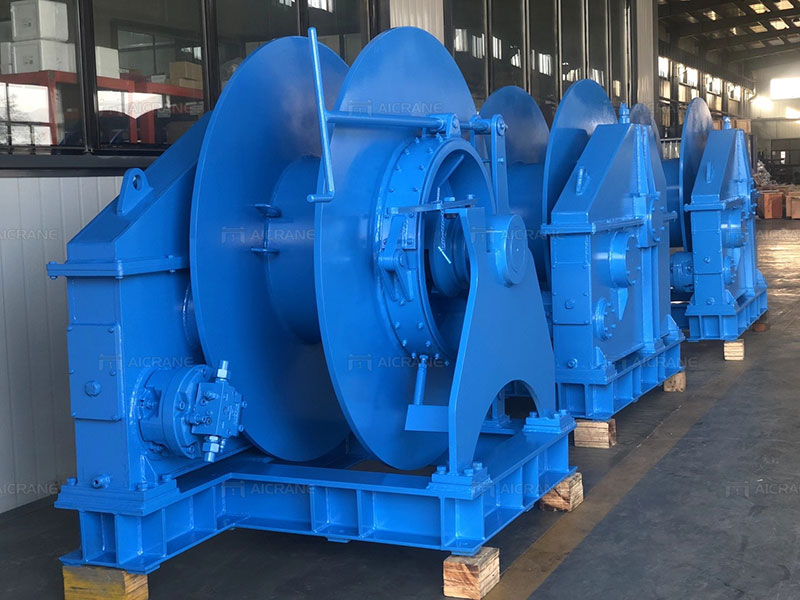A winch machine is a device used to lift, pull or move heavy loads. The structure of a winch machine typically includes the following components:
Winch Drum: The drum of the winch machine (mesin winch) is the cylindrical component around which the rope or cable is wound. It is powered by a motor or a hand-crank and is typically made of steel.

Cable or Rope: The cable or rope is wound around the winch drum and is used to lift or pull heavy loads. The strength and size of the cable or rope is dependent on the weight of the load to be lifted.
Gear Train: The gear train is a series of gears that transmit the power from the motor or hand-crank to the winch drum. The gear ratio determines the speed and power of the winch.
Motor: The motor is the power source for the winch and is typically an electric motor. It provides the energy required to turn the winch drum.
Control Switch: The control switch is used to turn the winch on and off, and to control the direction and speed of the winch.
Frame: The frame is the supporting structure of the winch for sale (winch dijual) and provides a stable platform for the winch components.
Brakes: The brakes are used to hold the load in place and prevent it from moving when the winch is not in operation. The brakes are typically mechanical or hydraulic.
Fairlead: The fairlead is a device used to guide the cable or rope onto the winch drum and prevent it from tangling or becoming damaged.
Hook: The hook is attached to the end of the cable or rope and is used to lift or pull the load. The hook is typically made of steel and has a latch to prevent the load from falling off.

Working Principle of Winch Machine
The working principle of a winch machine is based on the mechanical advantage provided by the winch drum and the cable or rope wound around it. The winch machine converts the power input from a motor or a hand-crank into rotational motion of the winch drum, which in turn pulls or lifts the load.
The working of a winch machine can be broken down into the following steps:
Power input: The winch machine is powered by a motor or a hand-crank, which provides the energy required to turn the winch drum.
Cable or rope winding: The cable or rope is wound around the winch drum, typically with the help of a fairlead, which guides the cable onto the drum and prevents it from tangling.
Load attachment: The load to be lifted or pulled is attached to the end of the cable or rope, typically with the help of a hook.
Power transmission: The power from the motor or hand-crank is transmitted to the winch drum via a gear train, which provides the necessary torque and speed to lift or pull the load.
Load lifting/pulling: As the winch drum rotates, it winds the cable or rope around it, which in turn lifts or pulls the load attached to the end of the cable or rope.
Load holding: Once the load is lifted or pulled to the desired height or position, the Aicrane winch is typically equipped with brakes to hold the load in place and prevent it from moving.
Load lowering: To lower the load, the brake is released, and the cable or rope is allowed to unwind from the winch drum, which lowers the load under gravity.
The working principle of a winch machine is simple yet powerful, and it finds applications in various industries such as construction, mining, and transportation.
